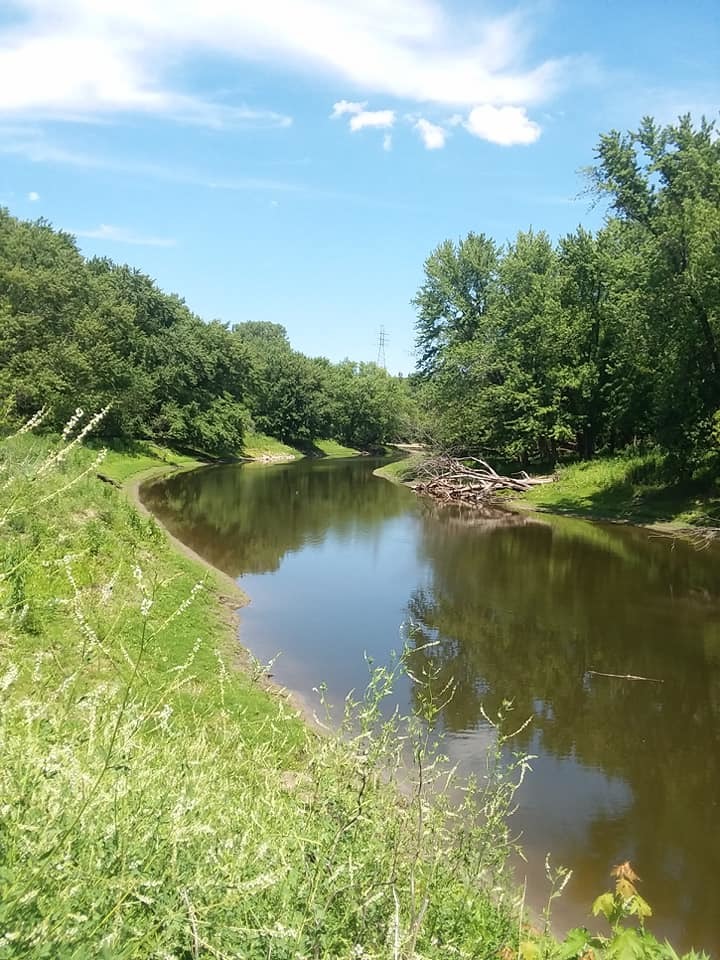Home, But Not Ready to Be
Jun. 30th, 2021 07:26 pm
Image: The bridge heading to Pike Island (Wita Tanka)
I have been having a tough re-entry into urban life. I miss the routine we got into up north, and I really really miss being able to shove everything aside because "I'm on vacation." Responsibilities suck, man.
I decided that what I needed was a good walk in the woods. A plaintive Google Search for state parks near me turned up Fort Snelling State Park, which is... really near me. Like, it's as close as I am to the airport, which is to say five minutes away by car. I guess I knew the park was there? I think someone even took me there, once, on a New Year's Eve hike. But, I had never really explored it as a State Park. I did my usual studying of maps and decided to take the Pike Island Hike.

Image: A slice of the Mississippi, I believe, as it comes around the island.
The trail was flat, though I found my knees aching in a new way thanks to some sections being somewhat soft sand. Most of it is paved? I met a bit of wildlife, even, coming across this TINY fellow in the road.

Image: toad in road
I was pretty sure I saw deer tracks, but otherwise the main fauna I ran into were other people. However, given that we were literally in a spot surrounded by three million people, not THAT many. I've honestly run into far more people at Minnehaha Falls, since that's a "destination" spot.
Anyway, I figured I'd better check out the state park today since there's a chance that the MN Legislator will fail to meet a budget agreement and the state will shut down. That means state park closings. Shawn, who works for the Minnesota Historical Society, figures they will pass the budget, or at least the bits that keep her job safe, so fingers crossed.

Image: Another stretch of the river--could be the Minnesota River, actually?
As I walk, I always stop to see where I am on any maps that the trail provides. This particular trail had excellent signage, although the one that was at the intersection between Pike Island and the Fort Snelling Historic site had been defaced (?) by the words "This is land was stolen from the Dakota Nation." Which of course, all of it was. However, this particular site is a spot where two rivers meet. https://en.wikipedia.org/wiki/Pike_Island and the spot of an internment camp during the Dakota War of 1862, where at least three hundred people died of starvation and cholera.

Image: A beautiful place, but an ugly history.
There is a memorial here and the site is interpreted to include this history, but it's funny how the graffiti spoke far clearer to me than any of the rest.